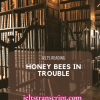- Đối với sản phẩm có giá: Sau khi chúng tôi ghi nhận thông tin đã thanh toán sản phẩm của bạn, sản phẩm sẽ được mở khóa và bạn có thể xem trực tiếp và tải tài liệu sản phẩm.
- Đối với thành viên trả phí: Bạn có thể mua và thanh toán sản phẩm với giá 0đ để tải tài liệu sản phẩm.
- Bạn có thể liên hệ với chúng tôi để được hỗ trợ mở khóa sản phẩm sớm nhất.
LIFE-CASTING AND ART
- Chúng tôi chấp nhận các phương thức thanh toán sau đây: Thẻ tín dụng, thẻ ghi nợ, PayPal, chuyển khoản ngân hàng và tiền mặt.
Chúng tôi sẽ không thu thêm phí cho bất kỳ hình thức thanh toán nào.
- Nếu bạn gặp vấn đề về sản phẩm của chúng tôi trong thời gian sử dụng, vui lòng liên hệ với chúng tôi để được hỗ trợ xử lý sớm nhất nhé.
Xem trước mẫu
Life-Casting and Art
Julian Bames explores the questions posed by Life-Casts, an exhibition of plaster moulds of living people and objects which were originally used for scientific purposes
A. Art changes over time and our idea of what art is changes too. For example, objects originally intended for devotional, ritualistic or re-creational purposes may be recategorised as art by members of other later civilisations, such as our own, which no longer respond to these purposes.
B. What also happens is that techniques and crafts which would have been judged inartistic at the time they were used are reassessed. Life-casting is an interesting example of this. It involved making a plaster mould of a living person or thing. This was complex, technical work, as Benjamin Robert Haydon discovered when he poured 250 litres of plaster over his human model and nearly killed him. At the time, the casts were used for medical research and, consequently, in the nineteenth century life-casting was considered inferior to sculpture in the same way that, more recently, photography was thought to be a lesser art than painting. Both were viewed as unacceptable shortcuts by the “senior” arts. Their virtues of speed and unwavering realism also implied their limitations; they left little or no room for the imagination.
C. For many, life-casting was an insult to the sculptor’s creative genius. In an infamous lawsuit of 1834, a moulder whose mask of the dying French emperor Napoleon had been reproduced and sold without his permission was judged to have no rights to the image. In other words, he was specifically held not to be an artist. This judgement reflect the view of established members of the nineteenth-century art world such as Rodin, who commented that life-casting ‘happens fast but it doesn’t make Art’. Some even feared that ‘if too much nature was allowed in, it would lead Art away from its proper course of the Ideal.
D. The painter Gauguin, at the end of the nineteenth century, worried about future developments in photography. If ever the process went into colour, what painter would labour away at a likeness with a brush made from squirrel-tail? But painting has proved robust. Photography has changed it, of course, just as the novel had to reassess narrative after the arrival of the cinema. But the gap between the senior and junior arts was always narrower than the traditionalists implied. Painters have always used technical back-up such as studio assistants to do the boring bits, while apparently lesser crafts involve great skill, thought, preparation and, depending on how we define it, imagination.
E. Time changes our view in another way, too. Each new movement implies a reassessment of what has gone before. What is done now alters what was done before. In some cases this is merely self-serving, with the new art using the old to justify itself. It seems to be saying, look at how all of that points to this! Aren’t we clever to be the culmination of all that has gone before? But usually it is a matter of re-alerting the sensibility, reminding us not to take things for granted. Take, for example, the cast of the hand of a giant from a circus, made by an anonymous artist around 1889, an item that would now sit happily in any commercial or public gallery. The most significant impact of this piece is on the eye, in the contradiction between unexpected size and verisimilitude. Next, the human element kicks in. you note that the nails are dirt-encrusted, unless this is the caster’s decorative addition, and the fingertips extend far beyond them. Then you take in the element of choice, arrangement, art if you like, in the neat, pleated, buttoned sleeve-end that gives the item balance and variation of texture. This is just a moulded hand, yet the part stands utterly for the whole. It reminds us slyly, poignantly, of the full-size original
F. But is it art? And, if so, why? These are old tediously repeated questions to which artists have often
...Đúc sống và nghệ thuật
Julian Bames khám phá những câu hỏi được đặt ra bởi Life-Casts, một cuộc triển lãm về khuôn thạch cao người và các vật sống ban đầu được sử dụng cho mục đích khoa học.
A. Nghệ thuật thay đổi theo thời gian và ý tưởng của chúng ta về nghệ thuật cũng thay đổi. Ví dụ, các vật ban đầu dành cho mục đích cầu nguyện, nghi lễ hoặc giải trí có thể được các thành viên của các nền văn minh khác sau này, chẳng hạn như của chúng ta phân loại thành nghệ thuật chứ không còn phục vụ các mục đích ban đầu nữa.
B. Điều cũng xảy ra là các kỹ thuật và hàng thủ công vốn đã bị đánh giá là thiếu tính nghệ thuật tại thời điểm chúng được sử dụng sẽ được đánh giá lại. Đúc sống là một ví dụ thú vị về việc này. Nó liên quan đến việc tạo ra một khuôn thạch cao của một người hoặc một vật thể sống. Đây là một công việc phức tạp, đòi hỏi kỹ thuật, như Benjamin Robert Haydon đã phát hiện ra khi ông làm đổ 250 lít thạch cao lên người mẫu của mình và suýt giết chết người này. Vào thời điểm đó, đúc được sử dụng cho nghiên cứu y tế và do đó, vào thế kỷ 19, đúc sống được coi là kém hơn so với điêu khắc cũng giống như cách mà gần đây, nhiếp ảnh được cho là môn nghệ thuật thấp hơn hội họa. Cả hai đều bị giới nghệ thuật “đàn chị” xem như những lối tắt không thể chấp nhận được. Đặc tính tốc độ và chủ nghĩa hiện thực vững vàng của chúng cũng ngụ ý những hạn chế của chúng; chúng có ít hoặc không có chỗ cho trí tưởng tượng.
C. Đối với nhiều người, đúc sống là một sự xúc phạm đối với tinh thần sáng tạo của nhà điêu khắc. Trong một vụ kiện tai tiếng năm 1834, một thợ đúc sở hữu chiếc mặt nạ hoàng đế Pháp Napoléon lúc chết, mặt nạ của người thợ đã bị sao chép và bán mà không có sự cho phép của ông nhưng bị phán xử là không có quyền đối với mặt nạ này. Nói cách khác, ông ấy rõ ràng không phải là một nghệ sĩ. Sự phán xử này phản ánh quan điểm của những nhân vật có tiếng trong giới nghệ thuật thế kỷ 19 như Rodin, người đã nhận xét rằng đúc sống ‘diễn ra nhanh chóng nhưng nó không tạo nên Nghệ thuật’. Một số người thậm chí còn lo sợ rằng ‘nếu cho phép quá nhiều trạng thái tự nhiên sẽ khiến Nghệ thuật chệch khỏi đường lối Lý tưởng đúng đắn của nó.
D. Họa sĩ Gauguin, vào cuối thế kỷ XIX, lo lắng về những phát triển tương lai của nhiếp ảnh. Nếu công nghệ nhiếp ảnh chuyển sang màu sắc, thì họa sĩ cần gì dốc sức vào bức chân dung với một chiếc cọ vẽ làm từ đuôi sóc? Nhưng hội họa đã tỏ ra rất mạnh mẽ. Tất nhiên, nhiếp ảnh đã thay đổi nó, cũng như cuốn tiểu thuyết đã phải đánh giá lại câu chuyện sau khi ra rạp. Nhưng khoảng cách giữa nghệ thuật cao cấp và nghệ thuật cơ sở luôn hẹp hơn những gì những người theo chủ nghĩa truyền thống ngụ ý. Các họa sĩ luôn sử dụng hỗ trợ kỹ thuật như phụ tá xưởng vẽ để thực hiện các công việc nhàm chán, trong khi rõ ràng càng ít việc thủ công liên quan đến kỹ năng, tư duy, chuẩn bị và trí tưởng tượng tốt tùy thuộc vào cách chúng ta định nghĩa nó.
E. Thời gian cũng thay đổi cái nhìn của chúng ta theo một cách khác. Mỗi chuyển động mới ngụ ý một sự đánh giá lại những gì đã xảy ra trước đó. Những gì được thực hiện bây giờ sửa đổi những gì đã được thực hiện trước đó. Trong một số trường hợp, điều này chỉ đơn thuần là tư lợi, với nghệ thuật mới sử dụng cái cũ để biện minh cho chính nó. Có vẻ như đang nói, hãy nhìn vào cách tất cả những điều đó chỉ ra điều này! Chẳng phải chúng ta thông minh để đạt đến đỉnh cao của tất cả những gì đã xảy ra trước đây sao? Nhưng thông thường đó là vấn đề tái cảnh báo cho tri giác, nhắc nhở chúng ta không nên coi mọi thứ là điều hiển nhiên đúng. Lấy ví dụ, tượng đúc bàn tay của một người khổng lồ từ một rạp xiếc, được thực hiện bởi một nghệ sĩ vô danh vào khoảng năm 1889, một món đồ mà bây giờ sẽ có vị trí tốt trong bất kỳ phòng trưng bày thương mại hoặc công cộng nào. Tác động đáng kể nhất của tác phẩm này là thị giác, trong sự trái ngược giữa kích thước bất ngờ và vẻ thật của nó. Tiếp theo, yếu tố con người góp phần, bạn hãy lưu ý rằng móng tay bị kết bụi bẩn, trừ khi đây là phần bổ sung trang
...Để xem được đầy đủ nội dung và tải dữ liệu, bạn phải trở thành thành viên của chúng tôi và trả phí cho tài liệu (nếu có)











